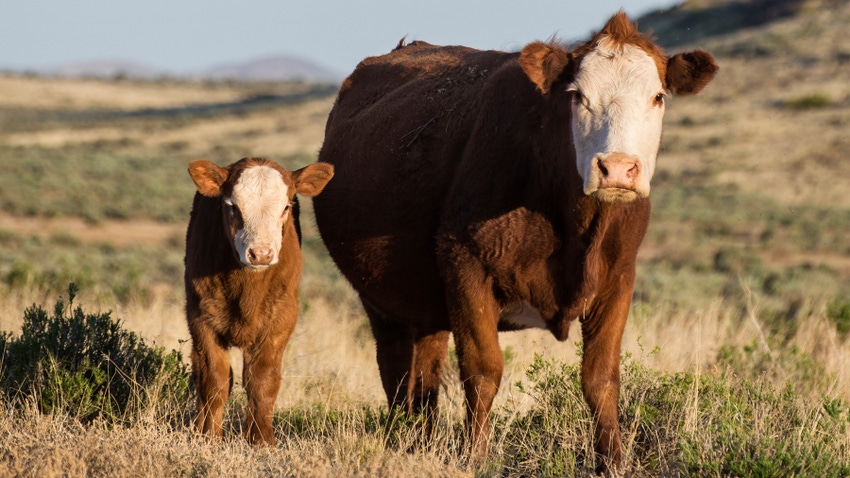
In the next decade, experts are predicting that global protein demand will grow by 50%. That’s 90 million metric tons more of animal protein that’s needed to be produced in order to meet future demand.
At the same time, the Elanco Pulse Institute counted 785,681 online conversations about sustainability in the month of January. About 40% of those conversations are specific to beef, says Colleen Parr Dekker, executive director for global corporate communications, Elanco Animal Health. Dekker says their research shows 44% of those who are avoiding animal protein are doing so because of the environment, whereas a decade ago they would have said health was their reason.
“Meat eaters are caught in this dichotomy of being just one person, but wanting to do their part,” she says. “They love their beef, but they want to do their part for the environment.”
But research has shown that cattle are an opportunity, not a culprit, in the climate change conversation, she adds. It’s just a matter of helping consumers understand what cattle producers are doing on their ranches. And, likewise, helping cattle producers capture the opportunity sustainability brings to their bottom lines.
Dekker hosted a panel of industry leaders, including Dr. G. Kee Jim, a veterinarian and cattle feeder in both Canada and the United States; John Ferry, a Corrine, Utah, rancher and 2021 NCBA Environmental Stewardship Award Program national winner; and Justin Sherrard, global strategist, animal protein, RaboResearch Food and Agribusiness.
On the ground
Ferry says years ago, the phrase of the day was “low-cost producer,” and now it’s “sustainability.” But both mean similar things. He ranches north of the Great Salt Lake, under a major flyway for ducks and geese, so “sustainability” for his family means making choices that not only benefit their cow herd, but also the wildlife. He says, “The greatest resource any farmer or rancher has is the land, and the land is always talking to you — you just have to listen to it.” For them, that means evaluating each enterprise and its effects on the land, as well as what it brings to their bottom line.
Jim says his feedlots approach sustainability by improving the production metrics around the cattle they feed. If the feedlots can improve gains and feed efficiency, that decreases the amount of feed they use to get an animal to market quicker. That’s one way he and the feedlots approach the environmental leg of the sustainability stool, he says. “On the social side, we use digesters and other activities to decrease odor around our feedlots to improve our situations with our neighbors,” he says. That creates an economic opportunity as well, the third leg of the stool.
That return on investment is a critical leg of the stool for cattle producers’ sustainability efforts, Jim says.
Ferry says that if you just identify what the land does the best, that’s where your sustainability equilibrium will be found. Consider this most recent and historic drought, he says, and how it exposed how some operations were better able to withstand its challenges, because they’d been working with the land instead of making the land conform to their production practices.
Jim shared how in Alberta, his feedlot was able to document a three-year baseline of carbon emissions, show the various practices implemented to reduce emissions, and monetize that into an average carbon credit of $5 to $10 per head.
“Last year we certified 20,000 tons of our CO2 reductions — that’s equivalent to 5,000 automobiles per year,” he says. So in the future, whether it’s by using feed additives or tools to recapture greenhouse gases, feedlots will have economic opportunities opening to them, he adds.
Risk versus opportunity
Sherrard advises cattle producers that balancing productivity with sustainability measures is critical for success when considering what to invest in for the operation. Invest in tools and methods that will improve your productivity now, he says, but keep an eye open for the future revenue opportunities as well.
He says there are three key things to keep in mind:
Understand data and your starting position today or in last five years, he says. That baseline you start with, and the ability to measure and report on your progress, will help you when an opportunity comes to monetize your sustainability efforts in some future market.
Markets are forming right now. The most progressive producers will be the ones who will see interests from companies with ambitious commitments to net zero carbon emissions. They’ve made those pledges to customers and shareholders, Sherrard says, and they want to quickly meet those goals with partners who are actively seeking opportunities on their operations.
Access to finance may very well change in the future depending on greenhouse gas emissions reporting. Sherrard explains that there may come a time when if you can’t, or choose not to, document your emissions, you may be given a default emission score based on similar farming operations. That score may make financing more expensive.
Ultimately, he advises cattle producers to remember that agriculture is the only industry with the potential to be net positive when it comes to making changes to greenhouse gas emissions. That’s a message that consumers need to hear. And industries are looking to agriculture to help them meet their net zero emissions commitments, which means agriculture must have a seat at the conversation around the dollars and sense of sustainability.
About the Author(s)
You May Also Like






